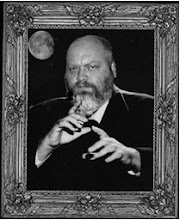'tis the season...continued...
As the holiday season arrives, many families begin decorating a tree and their homes with bells, holly, ivy and mistletoe -- all in preparation for the most mainstream of American celebrations: Christmas.
Would those families be surprised to learn that these traditions didn't originate with the designation of Christmas, but long before?
Few remember the December event from which Christmas -- as well as many other winter holidays -- evolved: the winter solstice.
Solstice is derived from "sol," meaning sun, and "sistere," to cause to stand still. The winter solstice, which usually falls on or around Dec. 21, is the shortest day of the year, the day when the sun appears lowest in the sky in the Northern Hemisphere. It is commonly known in modern times as the first day of winter.
The solstice was recognized by its darkness, if not by name, in pre-historic times by the aboriginal people in the northern latitudes. Winter was a harsh time for these people, and each year, they solemnly watched the life-giving sun disappear earlier day by day. Thus, when darkness reached its peak and the sun started regaining momentum, the people celebrated. Though the cold of winter was far from over, renewed life was assured. In this way, the concept of death/rebirth became associated with the winter solstice.
For the Germanic and Norse this time of year is known as Yule, which starts on the winter solstice and is called Mother Night. It lasts for 12 days or more. This is the most important day of the year. Many Norse symbols have been adsorbed by the Christian celebration of Christmas: evergreen trees, Yule logs, holly, even, some would argue, Kris Kringle himself.
Would those families be surprised to learn that these traditions didn't originate with the designation of Christmas, but long before?
Few remember the December event from which Christmas -- as well as many other winter holidays -- evolved: the winter solstice.
Solstice is derived from "sol," meaning sun, and "sistere," to cause to stand still. The winter solstice, which usually falls on or around Dec. 21, is the shortest day of the year, the day when the sun appears lowest in the sky in the Northern Hemisphere. It is commonly known in modern times as the first day of winter.
The solstice was recognized by its darkness, if not by name, in pre-historic times by the aboriginal people in the northern latitudes. Winter was a harsh time for these people, and each year, they solemnly watched the life-giving sun disappear earlier day by day. Thus, when darkness reached its peak and the sun started regaining momentum, the people celebrated. Though the cold of winter was far from over, renewed life was assured. In this way, the concept of death/rebirth became associated with the winter solstice.
For the Germanic and Norse this time of year is known as Yule, which starts on the winter solstice and is called Mother Night. It lasts for 12 days or more. This is the most important day of the year. Many Norse symbols have been adsorbed by the Christian celebration of Christmas: evergreen trees, Yule logs, holly, even, some would argue, Kris Kringle himself.


0 Comments:
Post a Comment
<< Home